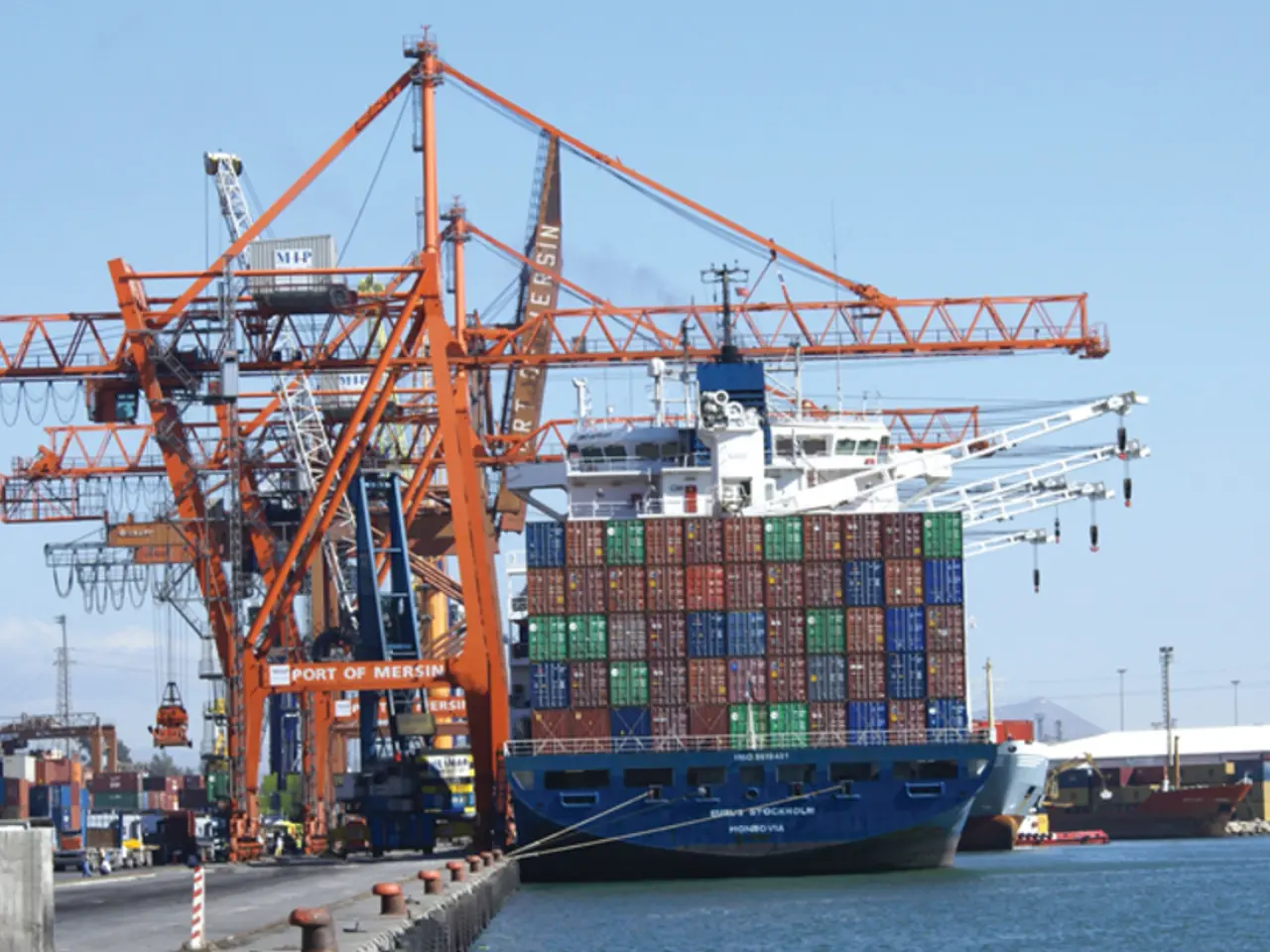Impact of Trump's Tariffs on American Ports
Tariffs on US Seaport Equipment Raise Operational Costs and Impact Consumers
The U.S. government has imposed tariffs on Chinese-made equipment, including large ship-to-shore cranes, used at seaports. These tariffs, which can reach up to 100%, have significantly increased costs for port operators and are likely to impact the average American consumer through higher prices.
China dominates the global market for these cranes, manufacturing about 70-80% of them worldwide, including nearly 80% of those used in the U.S. The high demand for these cranes is due to their lower cost compared to competitors, with each crane costing around $15 million. There are no domestic U.S. manufacturers or sufficient alternative international suppliers.
These tariffs add tens of millions of dollars in increased costs to the much-needed port equipment upgrades, threatening operational efficiency and modernization of U.S. ports. The tariffs are layered on top of existing 25% tariffs and possible further duties, exacerbating costs for port infrastructure.
For the average American consumer, these increased port costs translate into higher import and shipping costs for goods arriving through these ports. Since tariffs directly raise costs on imported equipment and goods, companies often pass these costs onto consumers. Overall, tariffs imposed in 2025 have increased prices of imported goods by an average of 18.3%, with low-income families experiencing an estimated 4% drop in purchasing power—equivalent to roughly $1,500 annually. Retailers are warning that while some have absorbed costs through inventory stockpiling, new tariffs threaten future price increases on consumer merchandise.
Beyond equipment, these tariffs contribute to broader supply chain challenges including customs delays and increased logistical costs, all of which feed into higher consumer prices.
Cary Davis, the president and CEO of the American Association of Port Authorities, discussed the effects of President Trump's tariff program on seaports. Davis's comments suggest that the tariff program is aimed at addressing nontariff barriers that prevent U.S. exports from reaching foreign markets, not just lowering trade barriers. Davis believes that the tariff program, when negotiating trade deals, helps in bringing down nontariff barriers in addition to tariff barriers.
Davis also mentioned that President Trump uses the word "fairness" a lot when talking about trade policy. The tariff program, as stated by Davis, is designed to give American goods more access to markets abroad, including China, Japan, Africa, and Europe. American exporters will have more opportunities to sell abroad due to the tariff program.
However, Davis did not discuss the impact of tariffs on equipment used at seaports, such as large ship-to-shore cranes, in the provided paragraph. The unpredictability of tariffs at maritime borders is causing difficulties in planning for freight volumes.
In summary, tariffs on port equipment raise critical operational costs for U.S. seaports, which contribute to higher shipping costs that eventually affect the prices paid by consumers across the U.S. The tariffs, while aimed at addressing nontariff barriers and promoting American exports, are causing significant financial strain for port operators and are likely to result in increased costs for consumers.
References
- CBS News
- National Retail Federation
- Wall Street Journal
- Bloomberg
- Brookings Institution
The high demand for low-cost large ship-to-shore cranes, which are primarily manufactured in China, might shift towards expensive domestic or international alternatives due to the tariffs on Chinese-made equipment. This change in crane supply could potentially escalate costs in the sports equipment industry, as these cranes are often used to transport bulky sports goods.
Moreover, unpredictable tariffs at maritime borders can contribute to difficulties in weathering the logistical challenges associated with the sports industry's complex supply chains. These complications could lead to inconsistencies in the delivery of sports goods to American consumers, potentially impacting their participation in various sports activities.







